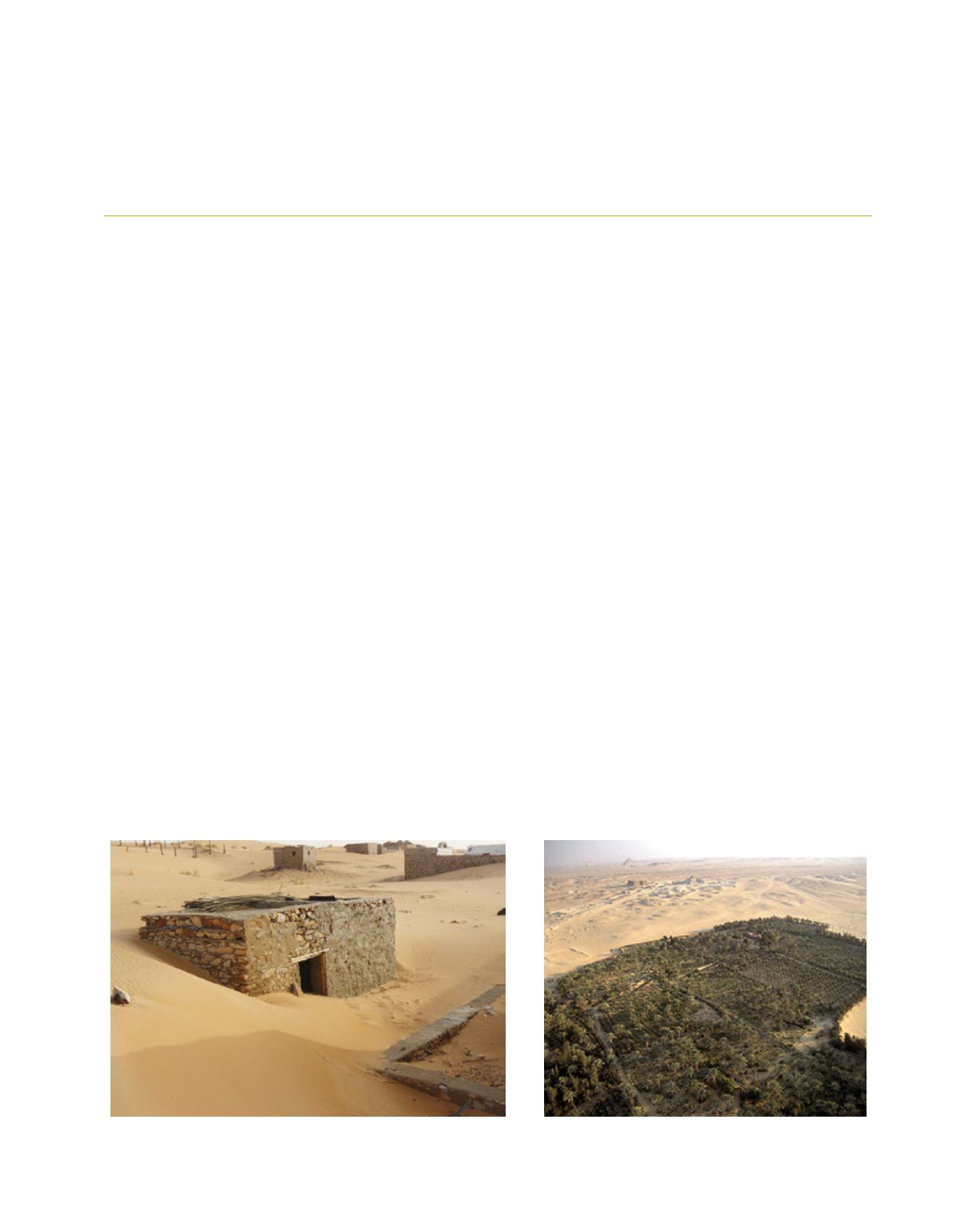

[
] 45
Desertification is not about deserts:
meeting drylands challenges through education
Luc Gnacadja, Executive Secretary, UN Convention to Combat Desertification
T
he encroachment of deserts on productive land causes
desertification, but this is only a small part, not the main
cause, of desertification. Desertification refers to land
degradation in the arid, semi-arid and dry sub-humid areas
due to various factors, including human activities and climate
variations.
Together, deserts and other dry ecological systems are known as
drylands. They occupy over 41 per cent of planet Earth. One in every
three people lives in the drylands, as well as a significant proportion
of the wildlife and half of the world’s livestock. These figures suggest
that it is impossible to achieve sustainable development while ignor-
ing the drylands.
The sustainable management of the drylands today is essential for
the eradication of poverty and the attainment of other internation-
ally agreed development goals. The approach to land management
advocated in combating desertification also enhances our ability
to meet future global food demand, move excess carbon from the
atmosphere into the soil and strengthen the resilience of rural
drylands communities to climate change. Therefore, efforts to curb
land degradation in the drylands – known as combating desertifi-
cation – must be at the centre of the campaigns linked to the UN
Decade of Education for Sustainable Development (DESD).
The basis for education initiatives to combat desertification
Established in 1994, the United Nations Convention to Combat
Desertification (UNCCD)
1
is the sole legally binding international
agreement linking environment, development and the
promotion of healthy soils. The Parties to the Convention
(193 countries and the European Community) seek to
alleviate poverty in the drylands, maintain and restore the
land’s productivity and mitigate the effects of drought.
Each Party implements the Convention on the basis
of its national action programme. This is the package
of activities each country deems critical to address-
ing desertification, land degradation and drought
(DLDD). The developed countries without any drylands
provide support for the implementation of the action
programmes. Although education is not prescribed
as a requirement for inclusion in every programme, it
is recognized as one of the priority fields for possible
action under Article 10 paragraph 4 of the Convention,
and as one of the supporting measures under Article 19.
At their 2007 Conference, the Parties adopted a
ten-year strategic plan and framework to enhance the
implementation of the Convention for the period 2008-
2018 (the Strategy). Education is a priority objective of
this Strategy. The Convention’s educational messages
seek to deepen understanding of issues of interest to the
stakeholders so that measures to combat desertification,
land degradation and drought become part and parcel
of every country’s development policy.
The Convention’s primary focus is the drylands areas
but its commitment to preventive measures, by promoting
Desert encroachment is only a small part of the desertification story
Land degredation and drought are widespread
Image: © Isselmou Ould Mohammed Hanefi
& UNCCD 2009 Photo Contest
Image: © Reza Deghati & UNCCD 2009 Photo Contest
















